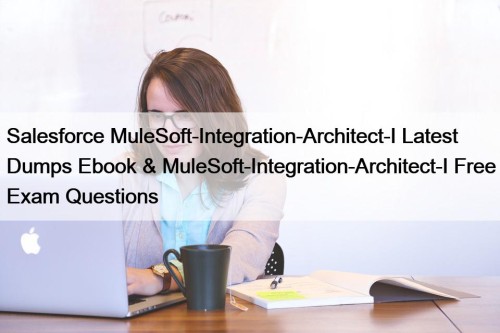Most Popular
 Salesforce MuleSoft-Integration-Architect-I Latest Dumps Ebook & MuleSoft-Integration-Architect-I Free Exam Questions
Salesforce MuleSoft-Integration-Architect-I Latest Dumps Ebook & MuleSoft-Integration-Architect-I Free Exam Questions
P.S. Free & New MuleSoft-Integration-Architect-I dumps are available on Google ...
 Free Sustainable-Investing Exam Questions Updates By ActualTestsQuiz
Free Sustainable-Investing Exam Questions Updates By ActualTestsQuiz
We take the rights of the consumer into consideration. So ...
 Oracle - 1Z0-1127-25 - Newest Oracle Cloud Infrastructure 2025 Generative AI Professional Latest Exam Question
Oracle - 1Z0-1127-25 - Newest Oracle Cloud Infrastructure 2025 Generative AI Professional Latest Exam Question
We always lay great emphasis on the quality of our ...



Newest JN0-683 Exam Overviews - Unparalleled JN0-683 Exam Tool Guarantee Purchasing Safety

Once you accept the guidance of our JN0-683 training engine, you will soon master all knowledge about the real exam. Because there are all the keypoints of the subject in our JN0-683 training guide. All in all, you will save a lot of preparation troubles of the JN0-683 Exam with the help of our study materials. We will go on struggling and developing new versions of the JN0-683 study materials. Please pay close attention to our products!
In order to serve you better, we have a complete system if you buying JN0-683 exam bootcamp from us. You can try the free demo before buying JN0-683 exam materials, so that you can know what the complete version is like. If you are quite satisfied with the free demo and want the complete version, you just need to add them to card, and pay for them. You will receive your download link and password for JN0-683 Exam Dumps within ten minutes after payment. We have after-service for you after buying JN0-683 exam dumps, if you have any question, you can contact us by email, and we will give you reply as soon as possible.
Well-Prepared JN0-683 Exam Overviews & Leading Offer in Qualification Exams & Updated JN0-683: Data Center, Professional (JNCIP-DC)
App online version being suitable to all kinds of digital equipment is supportive to offline exercises on the condition that you practice it without mobile data. These versions of JN0-683 test guide make our customers sublimely happy. So they are great JN0-683 test guide with high approbation. Our JN0-683 Torrent prep is fabulous with inspired points of questions for your reference. After your practice and regular review of our JN0-683 exam questions the advancement will be obvious, and your skills of the exam will be improved greatly.
Juniper JN0-683 Exam Syllabus Topics:
| Topic | Details |
|---|---|
| Topic 1 |
|
| Topic 2 |
|
| Topic 3 |
|
| Topic 4 |
|
Juniper Data Center, Professional (JNCIP-DC) Sample Questions (Q26-Q31):
NEW QUESTION # 26
In your EVPN-VXAN environment, you want to prevent a multihomed server from receiving multiple copies ofBUM traffic in active/active scenarios. Which EVPN route type would satisfy this requirement?
- A. Type 8
- B. Type 7
- C. Type 4
- D. Type 5
Answer: C
Explanation:
* Understanding the Scenario:
* In an EVPN-VXLAN environment, when using multi-homing in active/active scenarios, there's a risk that a multihomed server might receive duplicate copies of Broadcast, Unknown unicast, and Multicast (BUM) traffic. This is because multiple VTEPs might forward the same BUM traffic to the server.
* EVPN Route Types:
* Type 4 Route (Ethernet Segment Route):This route type is used to advertise the Ethernet Segment (ES) to which the device is connected. It is specifically used in multi-homing scenarios to signal the ES and its associated Ethernet Tag to all the remote VTEPs. The Type 4 route includes information that helps prevent BUM traffic duplication in active/active multi-homing by using a split-horizon mechanism, which ensures that traffic sent to a multihomed device does not get looped back.
* Explanation:
* The Type 4 route is crucial for ensuring that in a multi-homed setup, particularly in an active
/active configuration, BUM traffic does not result in duplication at the server. The route helps coordinate which VTEP is responsible for forwarding the BUM traffic to the server, thereby preventing duplicate traffic.
Data Center References:
* Type 4 routes are essential for managing multi-homing in EVPN to avoid the issues of BUM traffic duplication, which could otherwise lead to inefficiencies and potential network issues.
NEW QUESTION # 27
Exhibit.
You want to enable the border leaf device to send Type 5 routes of local networks to the border leaf device in another data center. What must be changed to the configuration shown in the exhibit to satisfy this requirement?
- A. Move vrf-target target: 65000:1 to the evpn hierarchy.
- B. Add encapsulation vxlan to the evpn hierarchy.
- C. Add a VLAN configuration with an 13-interface to the tenant1 routing instance.
- D. Change: 5001 in the route-distinguisher to : 10010.
Answer: A
Explanation:
In this scenario, you want the border leaf device to advertise Type 5 EVPN routes to another border leaf in a different data center. Type 5 routes in EVPN are used to advertise IP prefixes, which means that for proper route advertisement, you need to configure the correct settings within the evpn hierarchy.
Step-by-Step Analysis:
* Understanding EVPN Type 5 Routes:
* EVPN Type 5 routes are used to advertise IP prefixes across EVPN instances, which allow different data centers or networks to exchange routing information effectively.
* VRF Target Setting:
* The vrf-target configuration is crucial because it defines the export and import policies for the VRF within the EVPN instance. For EVPN Type 5 routes to be advertised to other border leaf devices, the vrf-target needs to be correctly configured under the evpn hierarchy, not just within the routing instance.
Command to solve this:
move vrf-target target:65000:1 to evpn
* Other Options:
* Option B:Adding a VLAN configuration would not address the requirement to advertise Type 5 routes.
* Option C:Adding VXLAN encapsulation may be necessary for other scenarios but does not directly address the Type 5 route advertisement.
* Option D:Changing the route-distinguisher will differentiate routes but does not impact the advertisement of Type 5 routes to other data centers.
By moving the vrf-target to the evpn hierarchy, you enable the proper route advertisement, ensuring that the Type 5 routes for local networks are shared with other data center border leaf devices. This is aligned with best practices for multi-data center EVPN implementations, which emphasize the correct placement of routing policies within the EVPN configuration.
NEW QUESTION # 28
Whatare two ways in which an EVPN-signaled VXLAN is different from a multicast-signaled VXLAN?
(Choose two.)
- A. An EVPN-signaled VXLAN can perform autodiscovery of VTEPs using IS-IS.
- B. An EVPN-signaled VXLAN can perform autodiscovery of VTEPs using BGP.
- C. An EVPN-signaled VXLAN is less resource intensive.
- D. An EVPN-signaled VXLAN features slower and more complete convergence.
Answer: B,C
Explanation:
* Multicast-Signaled VXLAN:
* In traditional multicast-signaled VXLAN, VTEPs (VXLAN Tunnel Endpoints) use multicast to flood and learn about remote VTEPs. This method relies on multicast in the underlay network to distribute BUM (Broadcast, Unknown unicast, and Multicast) traffic.
* This approach can be resource-intensive due to the need for multicast group management and increased network traffic, especially in large deployments.
* EVPN-Signaled VXLAN:
* EVPN-signaled VXLAN uses BGP (Border Gateway Protocol) to signal the presence of VTEPs and distribute MAC address information. BGP is used for VTEP autodiscovery and the distribution of endpoint information.
* This method is more efficient because it reduces the reliance on multicast, instead using BGP control-plane signaling to handle VTEP discovery and MAC learning, which reduces the overhead on the network and improves scalability.
* Correct Statements:
* B. An EVPN-signaled VXLAN can perform autodiscovery of VTEPs using BGP:This is correct because EVPN uses BGP for VTEP autodiscovery, making it more efficient and scalable compared to multicast-based methods.
* C. An EVPN-signaled VXLAN is less resource-intensive:This is correct because it eliminates the need for multicast flooding in the underlay, instead using BGP for signaling, which is less demanding on network resources.
* Incorrect Statements:
* A. An EVPN-signaled VXLAN can perform autodiscovery of VTEPs using IS-IS:This is incorrect because EVPN relies on BGP, not IS-IS, for VTEP discovery and signaling.
* D. An EVPN-signaled VXLAN features slower and more complete convergence:This is incorrect; EVPN with BGP typically provides faster convergence due to its use of a control plane rather than relying on data plane learning.
Data Center References:
* EVPN-VXLAN is widely adopted in modern data center designs due to its scalability, efficiency, and reduced resource consumption compared to multicast-based VXLAN solutions. It leverages the strengths of BGP for control-plane-driven operations, resulting in more efficient and scalable networks.
NEW QUESTION # 29
You are asked to interconnect Iwo data centers using a method that provides EVPN Type 2 connectivity, is highly scalable, and limits VXLAN tunnels between border leafdevices. What will satisfy these requirements?
- A. Type 2 seamless stitching
- B. EVPN Type 2 stretch
- C. over the top full-mesh interconnect
- D. IP VPN
Answer: A
Explanation:
* Requirement Analysis:
* The scenario requires a solution to interconnect two data centers that supports EVPN Type 2 connectivity. The solution must be highly scalable and must minimize the number of VXLAN tunnels between border leaf devices.
* Understanding Type 2 Seamless Stitching:
* Option D:Type 2 seamless stitchingis a method used in EVPN to provide Layer 2 connectivity (such as MAC address mobility) across different VXLAN segments. It is scalable because it allows only necessary tunnels to be established between border leaf devices, reducing the overhead of maintaining a full mesh of VXLAN tunnels.
Conclusion:
* Option D:Correct-Type 2 seamless stitching satisfies the requirement by enabling scalable, efficient interconnection of two data centers with minimal VXLAN tunnels.
NEW QUESTION # 30
Exhibit.
Referring to the exhibit, when Host A sends an ARP request for Host B's IP address, which Junos feature does leaf1require to send an ARP response back to Host A without having to send a broadcast frame over the fabric?
- A. proxy ARP
- B. proxy NDP
- C. DAD
- D. GARP
Answer: A
Explanation:
* Scenario Overview:
* In the exhibit, Host A is trying to resolve Host B's IP address (10.10.1.2) through ARP (Address Resolution Protocol). Normally, an ARP request would be broadcasted over the network, and the host owning the IP address (Host B) would respond.
* Role of Proxy ARP:
* Option A:Proxy ARPallows a router or switch (in this case, leaf1) to respond to ARP requests on behalf of another host. Leaf1, knowing the MAC address of Host B through the EVPN MAC advertisement, can reply to Host A's ARP request directly without broadcasting the request across the entire network fabric. This feature reduces unnecessary traffic and increases network efficiency.
Conclusion:
* Option A:Correct-Proxy ARP enables leaf1 to respond to Host A's ARP request for Host B's IP without broadcasting over the IP fabric, thus providing the ARP response locally.
NEW QUESTION # 31
......
Our JN0-683 preparation torrent can keep pace with the digitized world by providing timely application. There are versions of Software and APP online, they can simulate the real exam environment. If you take good advantage of this JN0-683 practice materials character, you will not feel nervous when you deal with the JN0-683 Real Exam. Furthermore, they can be downloaded to all electronic devices so that you can have a rather modern study experience conveniently. Why not have a try on our JN0-683 exam questions?
Latest JN0-683 Exam Pattern: https://www.dumpexams.com/JN0-683-real-answers.html
- JN0-683 Reliable Exam Answers 🏮 VCE JN0-683 Dumps ⏫ Practice JN0-683 Test 🌏 Download ➤ JN0-683 ⮘ for free by simply searching on ☀ www.examdiscuss.com ️☀️ 🍯JN0-683 Reliable Exam Answers
- Exam Questions for Juniper JN0-683 in PDF Format 🧿 Search for { JN0-683 } and download it for free on 「 www.pdfvce.com 」 website 🌂Reliable JN0-683 Exam Preparation
- JN0-683 Hot Spot Questions 👏 JN0-683 Free Sample 🧭 JN0-683 Valid Exam Online 🥟 Search for ☀ JN0-683 ️☀️ and download exam materials for free through ☀ www.real4dumps.com ️☀️ 🦆JN0-683 Valid Exam Online
- JN0-683 Valid Exam Online 🦗 Exam JN0-683 Details 🍢 Valid Test JN0-683 Tutorial 🧛 Go to website ⏩ www.pdfvce.com ⏪ open and search for ➠ JN0-683 🠰 to download for free 🟡VCE JN0-683 Dumps
- JN0-683 Latest Test Sample 🌻 JN0-683 Valid Exam Online 🆎 Valid Test JN0-683 Tutorial 🔌 Easily obtain ▛ JN0-683 ▟ for free download through ⮆ www.passcollection.com ⮄ 📅JN0-683 Reliable Exam Answers
- JN0-683 Reliable Study Materials 🙊 JN0-683 Reliable Study Materials ✔️ Valid JN0-683 Practice Materials 🏪 Simply search for ( JN0-683 ) for free download on ➽ www.pdfvce.com 🢪 🤜Certification JN0-683 Exam Infor
- Free PDF JN0-683 - Trustable Data Center, Professional (JNCIP-DC) Exam Overviews 🌼 Simply search for ➥ JN0-683 🡄 for free download on ⮆ www.lead1pass.com ⮄ ❓Valid Test JN0-683 Tutorial
- New JN0-683 Test Objectives 🤱 Reliable JN0-683 Exam Preparation 🕋 JN0-683 High Passing Score 🏘 Open website ➥ www.pdfvce.com 🡄 and search for ➤ JN0-683 ⮘ for free download 🐈JN0-683 Reliable Study Materials
- 2025 Juniper JN0-683 Exam Overviews - Realistic Data Center, Professional (JNCIP-DC) Exam Overviews 100% Pass Quiz 🕊 Search for ▷ JN0-683 ◁ on ▷ www.exams4collection.com ◁ immediately to obtain a free download 💂Valid JN0-683 Exam Dumps
- Reliable JN0-683 Exam Preparation 🐃 JN0-683 Valid Exam Online 🐯 New JN0-683 Test Objectives 🌻 Easily obtain ➥ JN0-683 🡄 for free download through 【 www.pdfvce.com 】 🚬Valid JN0-683 Practice Materials
- Certification JN0-683 Exam Infor 🛣 JN0-683 Valid Exam Online 😕 Valid JN0-683 Practice Materials 🤪 Download ▶ JN0-683 ◀ for free by simply entering { www.pass4leader.com } website 👷JN0-683 Latest Test Sample
- JN0-683 Exam Questions
- csneti.com improve.cl digicomtrainingacademy.org kamikazoo.com infodots.in lskcommath.com peakperformance-lms.ivirtualhub.com perfect-learning.com wzsj.lwtcc.cn smartearningacademy.com
Tags: JN0-683 Exam Overviews, Latest JN0-683 Exam Pattern, Exam JN0-683 Topics, JN0-683 Latest Test Question, JN0-683 Valid Test Notes